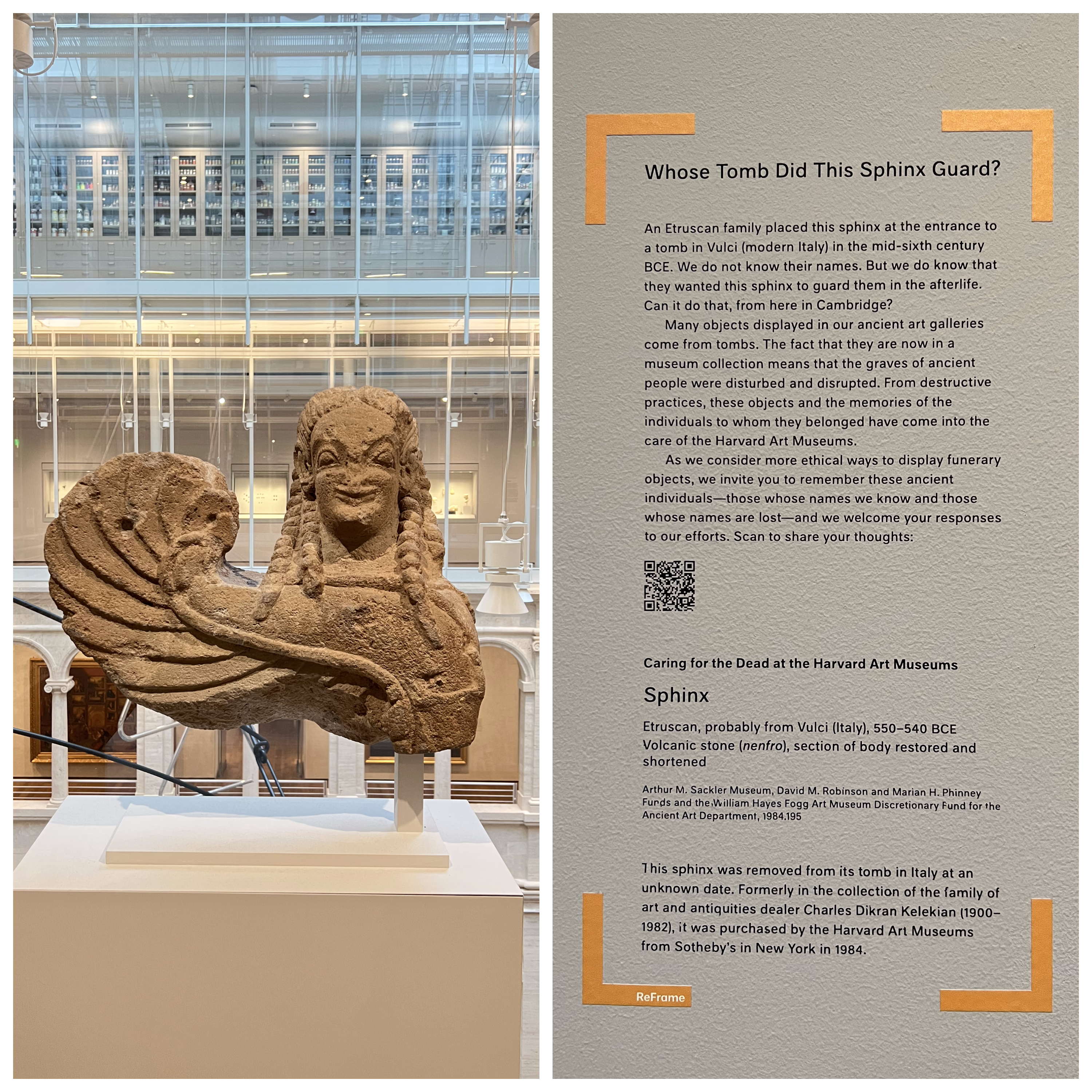Harvard Art Museums - ReFrame Discussion - RB, JL, TL, AN

For this sphinx object and label with ReFrame, it’s compelling that at least the conversation is being opened up: there is acknowledgement of people’s tombs having needed to be disturbed in order to present this object, and there is acknowledgement that the history and proper path forward can get murky. With the objective of creating community around objects, this ReFrame does open up the conversation. The QR code is interesting because it invites people to leave their thoughts; upon exploring, it leads to a one-directional, opaque Qualtrics survey. You type in your thoughts in a long-response text box and you’re not able to access your response after you submit nor see other people’s responses. In the spirit of creating community, might there be other ways to have the discussion more broadly and openly regarding how to display these funerary objects? The questions from our class discussions continue to linger: does acknowledgement of being “removed from its tomb… at an unknown date” satisfy our current needs for (more) ethical museum practices? What might the alternative(s) be? Something better, or nothing at all?
–

For this mirror object, descriptive label/text, and ReFrame, the objective of the ReFrame seems to shift. It’s not posing direct questions, although it is presenting information that may not be traditionally found in labels and art-accompanying texts. Instead of looking on the cultural and social impacts of the object like the sphinx, this framing comes from a scientific and material research standpoint. Perhaps, demonstrating how objects like this are of use in current study. The text: “because they were not scientifically excavated, it’s difficult…” seems to almost beckon a question — parallel to the sphinx object covered above, what is the history? How was it excavated, who did it, how is it here now? We only know that it comes from tombs, but much other information is missing. Instead of telling more about the cracks and fissures and the radiopacity of various materials, it would be helpful to give reasons why the x-ray was used in the first place, and what information can be revealed about the object’s history from the x-ray. Connecting these themes to the sphinx could be an interesting way of creating community and conversation around these two seemingly distinct pieces. How could technology be utilized in this ReFrame? For communicating more of the timeline? For allowing exploration of the x-ray techniques used to examine? For connecting this art with other objects from tombs or having similar repair/concealment techniques? Or is it fine as it?
–

For the Bodhisattva object and Buddhism text, this could be an opportunity for a meaningful ReFrame. What’s the history of how this object came from a cave in 7th century China to the 20th century Sackler collection? The object text describes the possible process of making and the meanings behind the object in its original setting; it is almost inviting the question: so what is its purpose here? What is it doing here? For the larger Buddhism text, it currently focuses on the history of Buddhism and some general understanding of its history; perhaps a ReFrame could focus on how it’s impacting life today. With community making as a theme of ReFrame, how can discussions be facilitated around the current ubiquity of ideas such as mindfulness, spiritual centering, etc. and how those were informed by Buddhist practice and are there possible relationships that objects such as the Bodhisattva could have with that? Possible technology inclusions could be examining the Bodhisattva object within its original context: with the other 7 figures it was originally around for its original purpose.